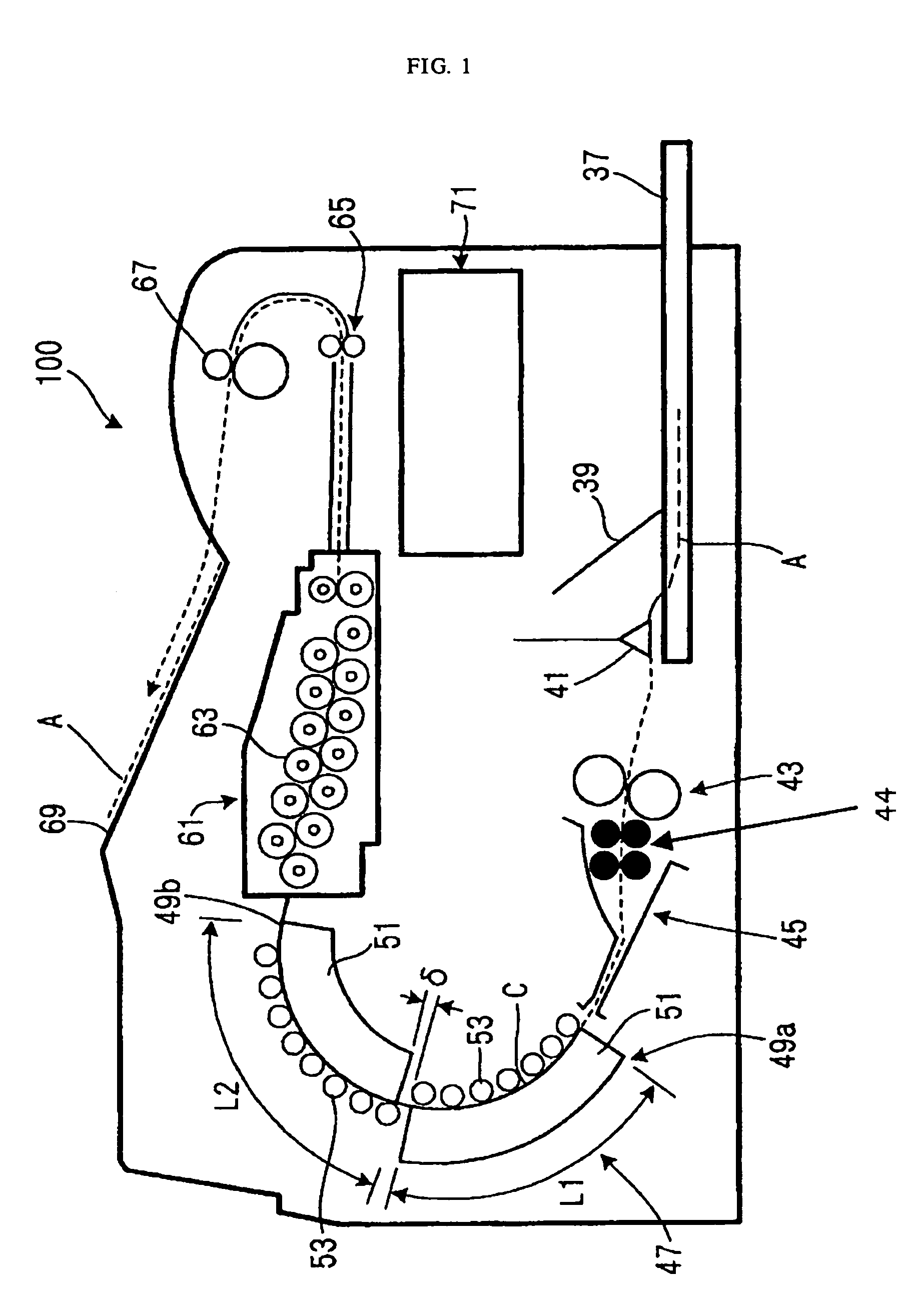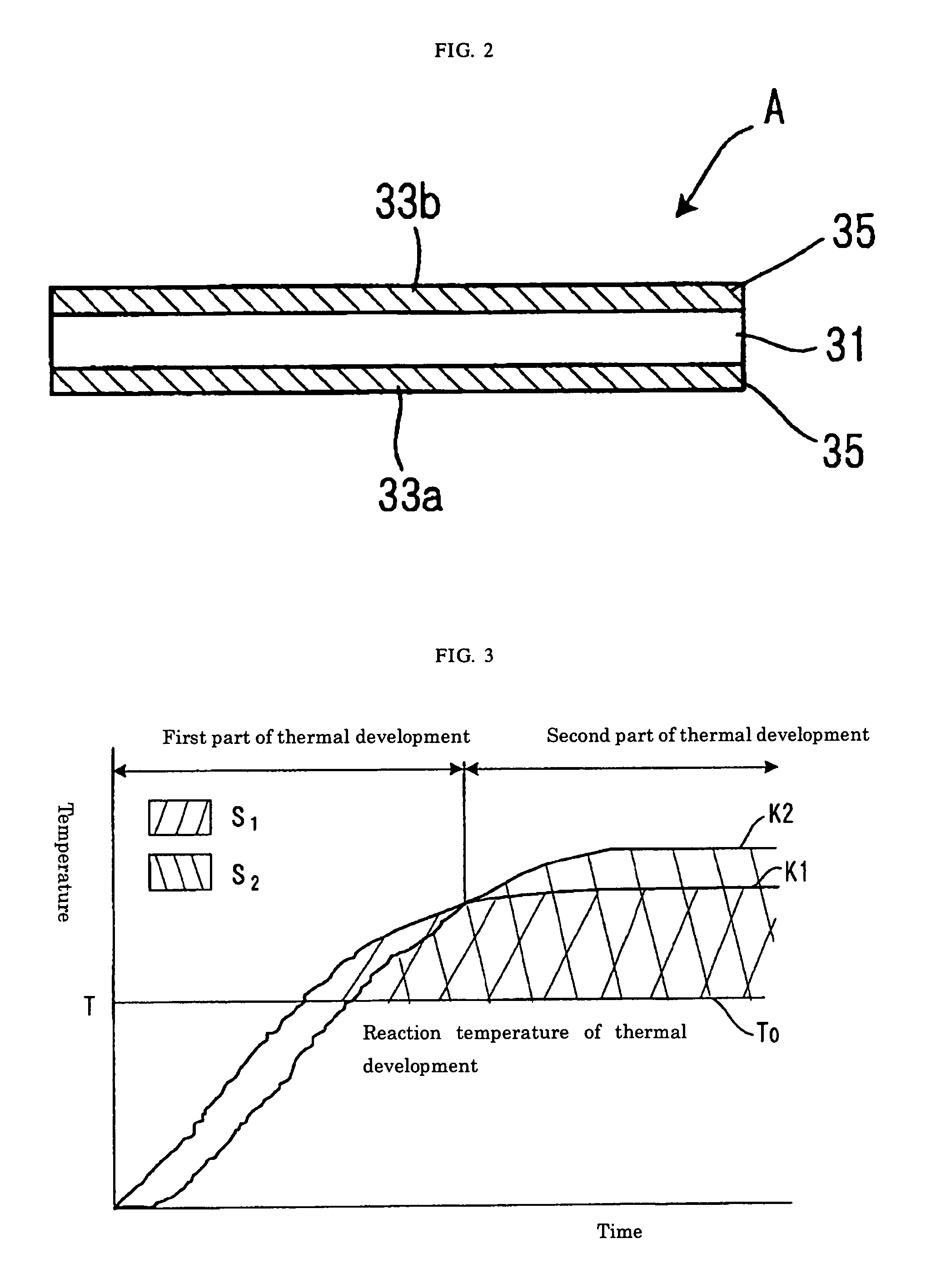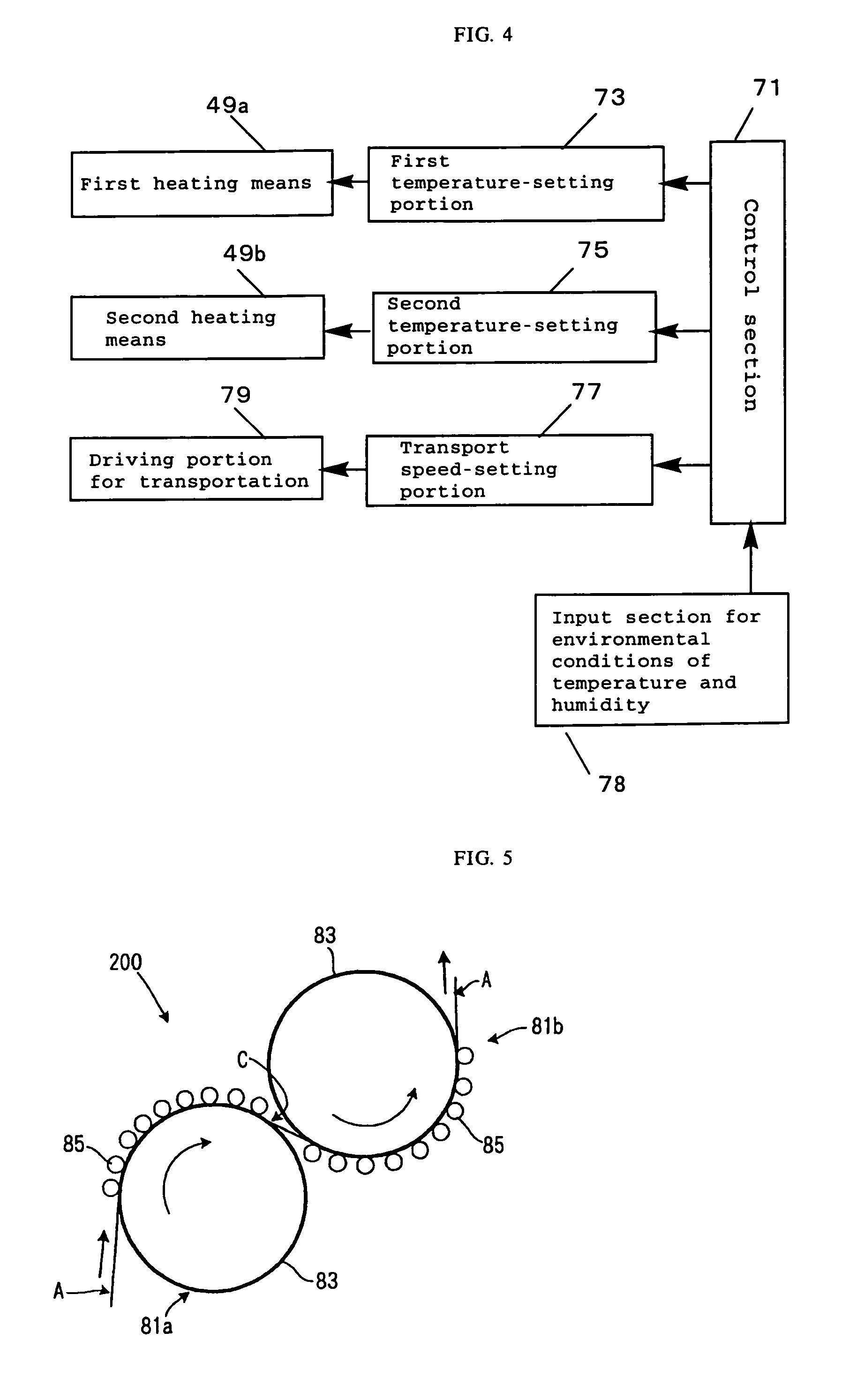Photothermographic material and image forming method
a photothermographic material and image forming technology, applied in the direction of diffusion transfer process, instruments, photosensitive materials, etc., can solve the problems of insufficient image quality of digital imaging recording materials obtained by such general image forming systems, insufficient image quality (sharpness, diagnosis, high recording speed (sensitivity), etc., and the level at which digital imaging recording materials can be replaced
- Summary
- Abstract
- Description
- Claims
- Application Information
AI Technical Summary
Benefits of technology
Problems solved by technology
Method used
Image
Examples
example 1
1. Preparation of PET Support and Undercoating
1-1. Film Manufacturing
[0586]PET having IV (intrinsic viscosity) of 0.66 (measured in phenol / tetrachloroethane=6 / 4 (weight ratio) at 25° C.) was obtained according to a conventional manner using terephthalic acid and ethylene glycol. The product was pelletized, dried at 130° C. for 4 hours, and colored blue with the blue dye (1,4-bis(2,6-diethylanilinoanthraquinone). Thereafter, the mixture was extruded from a T-die and rapidly cooled to form a non-tentered film.
[0587]The film was stretched along the longitudinal direction by 3.3 times using rollers of different peripheral speeds, and then stretched along the transverse direction by 4.5 times using a tenter machine. The temperatures used for these operations were 110° C. and 130° C., respectively. Then, the film was subjected to thermal fixation at 240° C. for 20 seconds, and relaxed by 4% along the transverse direction at the same temperature. Thereafter, the chucking part was slit off,...
example 2
[0687]SBR latex (TP-1) and Isoprene latex (TP-2) were prepared in a similar manner to the process in the preparation of photothermographic material sample Nos. 1 and 5 of Example 1, except that after the completion of reaction, and after the inner temperature was lowered to the room temperature, the pH of the solution was adjusted to 8.4 with 1 mol / L LiOH and 1 mol / L NH4OH solution. At that time, the ratio of the addition amounts of NH4OH and LiOH was adjusted so as to make the coating amount of ammonium ion to be the amount shown in Table 4 and Table 5.
[0688]Moreover, the addition amounts of nucleator dispersion was adjusted so as to make the photographic properties to be nearly the same as those of sample Nos. 1 and 5, respectively.
[0689]The photothermographic material Nos. 11 to 18 were prepared similar to Example 1 except the mentioned above. The obtained samples were evaluated similar to Example 1 and in addition, the following evaluation was performed.
[0690](Evaluation of Stor...
example 3
[0695]The photothermographic material Nos. 1 and 5 of Example 2 were evaluated similar to Example 1 except that the preheating conditions of thermal developing apparatus was changed to the conditions described shown in Table 6, and the environmental condition was adjusted to 25° C. and 60 RH % (standard temperature and humidity). In addition to the above, the following evaluation was performed.
[0696]Development Unevenness
[0697]Ten sheets (a size of half cut size) of each sample were subjected to X-ray exposure in the above described condition to give an image density of 1.2. The obtained image was sensory evaluated by the visual observation. Results of the evaluation are shown according to the following rankings,
[0698]⊚: no development unevenness in the image portion is perceived,
[0699]◯: slightly development unevenness in the image portion is perceived, but negligible level for inspecting the image,
[0700]Δ: some development unevenness in the image portion is perceived, and impracti...
PUM
| Property | Measurement | Unit |
|---|---|---|
| mean equivalent spherical diameter | aaaaa | aaaaa |
| mean aspect ratio | aaaaa | aaaaa |
| emission peak wavelength | aaaaa | aaaaa |
Abstract
Description
Claims
Application Information
 Login to View More
Login to View More - R&D
- Intellectual Property
- Life Sciences
- Materials
- Tech Scout
- Unparalleled Data Quality
- Higher Quality Content
- 60% Fewer Hallucinations
Browse by: Latest US Patents, China's latest patents, Technical Efficacy Thesaurus, Application Domain, Technology Topic, Popular Technical Reports.
© 2025 PatSnap. All rights reserved.Legal|Privacy policy|Modern Slavery Act Transparency Statement|Sitemap|About US| Contact US: help@patsnap.com



